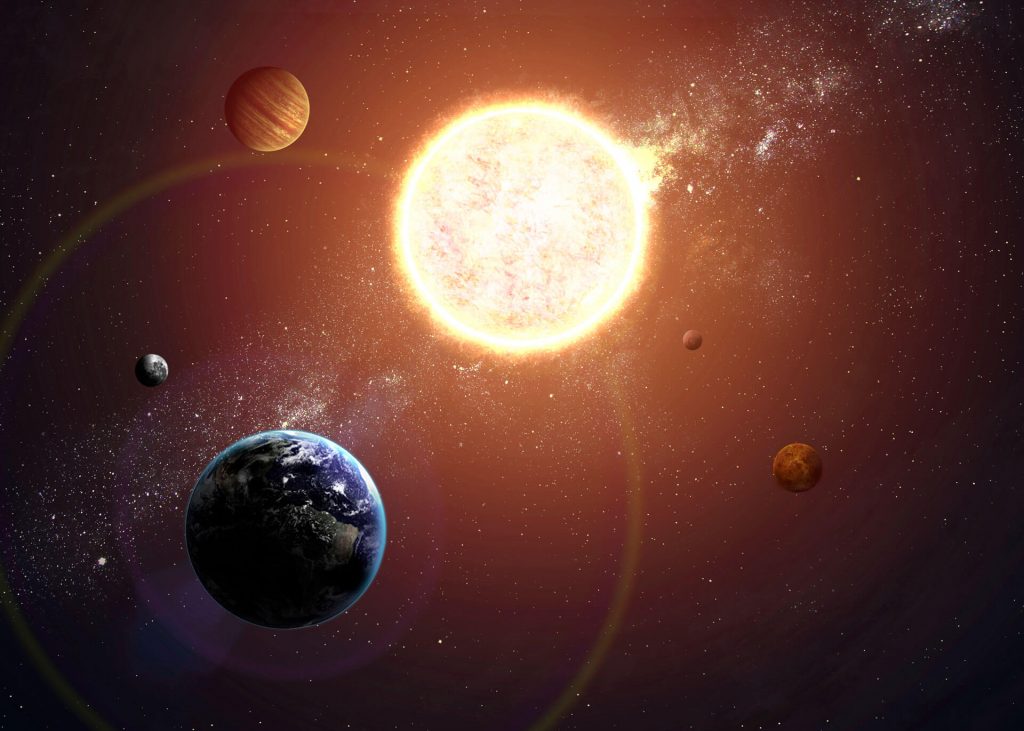
Various research related to these topics is carried out at the IAFE. Particularly, the Solar Physics group is dedicated to the study of phenomena that occur from the upper layers of the Sun’s interior to the solar atmosphere and the interplanetary medium, on various space-time scales. Among the problems we study are the evolution of active regions, which are the source of active events such as flares and coronal mass ejections, and the heating of the corona and the solar wind globally using tomographic techniques developed by the group. The study of magnetic structures and their evolution allows us to understand where the energy associated with these events comes from, the destabilization mechanisms that produce them and the general genesis of the solar magnetic field. The study of the corona and solar wind on a global scale allows us to validate advanced space weather prediction models.
In addition, the LAMP group (https://www.iafe.uba.ar/u/lamp/) also makes contributions to the study of the solar wind and the transport of galactic cosmic rays in the interplanetary medium. In particular, it investigates transient interplanetary events of solar origin, which after traveling in the heliosphere can detonate geomagnetic storms and modify the transport of cosmic rays in the interplanetary medium. The applications of these results are also of great relevance to space meteorology.
On the other hand, there are countless stars with parameters similar to those of the Sun: age, temperature, mass, etc. The high magnetic fields generated inside these stars produce structural changes in their atmospheres, giving rise to magnetic manifestations similar to those of the sun, known by the generic name of “stellar activity.” In the particular case of stars that host planets, the level of activity of these stars and their variability can be determining factors in the habitability of exoplanets, as well as in the chemistry of their atmospheres. The Stellar Physics group is dedicated to studying the short- and long-term activity of solar-type stars and red dwarfs based on own observations taken at the El Leoncito Astronomical Complex (CASLEO) and through semi-empirical atmosphere models from X-rays to the far infrared.
Another part of the work carried out at the IAFE is dedicated to planetary science. The minor bodies of the solar system are the remnants of the material from which the planets were formed, which is why they are very important objects of study to reveal the process of formation of the Solar System and planetary systems in general. In the planetary science group, the relationship between the orbital properties and the surface characteristics of various populations of smaller bodies is studied, in order to better understand their history and physical nature. Studies are also carried out on planetary rings, asteroidal rings and on the dynamics of extra-solar systems.
Another field that is studied also includes optical aeronomy, which is an area that investigates the physical behavior of the Earth’s upper atmosphere. Particularly, the IAFE studies dynamic variations in the mesopause region, between 80 and 100 km high. For this, it has its own data obtained with the “Argentinian Airglow Spectrometer” (AAS), with measurements since 1984, and which since 1998 has been measured from the CASLEO. The AAS measures the nocturnal emissions of OH(6-2) and O2b(0-1), from which the intensities and temperatures at the emission heights are determined, at 87 km and 95 km, respectively. The large database obtained allows the analysis of various dynamic phenomena on time scales ranging from a few hours to several years: gravity waves, thermal tides, planetary waves, seasonal and interannual variation, effect of solar activity and long-term trend. For more information about the research topic, the AAS and the database obtained, see https://www.iafe.uba.ar/aeronomia/
Moreover, within the framework of the activities carried out by the Argentinian Research unit in Astrobiology (www.astrobioargentina.org), at the IAFE, – and together with other institutions in the country (CONICET institutes, UBA, CNEA) and from abroad – we carry out interdisciplinary research in this field of science, which studies the origin, evolution, and distribution of life in the universe. The research topics include the study of the influence of stellar radiation on life, among others.